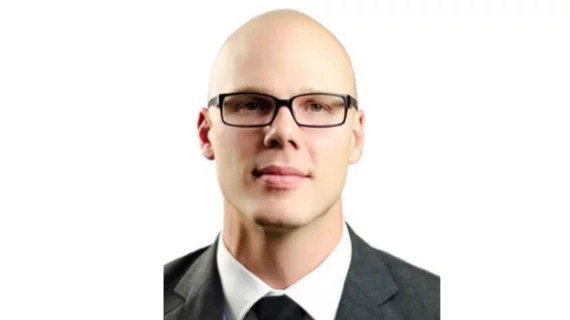It’s 2016. If you’re not thinking about joining the growing ranks of healthcare providers that are digitally storing all clinical information from across the enterprise so it’s secure, expandable and readily accessible to authorized caregivers working anywhere and anytime, it’s time to wake up and smell the vendor-neutral archive (VNA).
Informally defined, a VNA is a complete, continually updated medical record that “follows” your patients wherever they go for care throughout their lifetime, including outside your enterprise.
Best-of-breed solutions in this product category incorporate technical innovations supporting such forward-thinking uptime aids and productivity boosters as:
- preparedness for organizational growth as well as unforeseeable disasters,
- adaptability to accommodate multiple specialties generating all manner of images, reports and multimedia files, and
- nimbleness to allow choice of, or movement between, traditional in-house storage and offsite, SaaS/cloud-type options.
Those are the key takeaway points from a recent conversation between ImagingBiz and two VNA experts—Fredrik Gustavsson, CTO of Sectra, and the company’s senior director of global product marketing, Petra Granlund.
The two maintain that, while some of the capabilities are features of several VNAs on the market, the Sectra VNA has them all—plus one that, they say, is emerging as a noteworthy Sectra VNA specialty. That would be its leveraging of VNA architecture to optimize cross-enterprise collaboration.
“We are increasingly emphasizing integrated diagnostics,” explains Gustavsson, citing as an example cancer-care pathways that demand close collaboration between radiologists and pathologists.
“Those two specialties are being brought together to allow for better outcomes and also to increase the quality of the decision-making process in the tumor boards,” he says. “In complex cases that require a multidisciplinary team approach to make the right clinical decisions, the cross-enterprise piece can become truly critical.”
Vendor-neutral equals future-ready
But let’s back up for a minute. What has been prompting providers, en masse, to recognize their growing need for vendor-neutral archiving?
“With the recent rollouts of large scale EMRs, the need of image enabling [EMRs] have also become apparent, and has driven the growth of VNA solutions,” Granlund notes. “When you can access all images and information on a given patient from a single point, you are going to find your EMR so much less complex.”
And speaking of the growing demand for solutions that simplify, Gustavsson adds, Sectra’s VNA is designed to take the guesswork out of which data objects ought to be in the VNA in the first place.
Upon ingestion of, for example, image stacks from a CT exam, the software automatically links and spatially registers related files, he says. This creates routes to the files in advance of users actually going looking for those files.
“You could say that our VNA is clinically aware,” says Gustavsson. “It ‘understands’ what needs to go into the VNA. It’s not only storing images but also adding value through its contextualizing of the clinical processes in which those images are to be used.”
To this Granlund adds that the overall guiding concept has been to have so many “building blocks” comprising the Sectra VNA that it becomes a self-contained solution for any care-team member who has reason to follow patients at any point during, or all the way through, their clinical pathways.
“We can do analysis to see how you utilize your systems,” she says, noting that this can be a help when it comes to, for instance, adding or optimizing a building block like radiation dose management, say, or information lifecycle management.
“Everything is integrated so that you have everything you need to complete your clinical pathway” and manage your enterprise data, she says. “And we feel it’s important for all these blocks to work together. That way you don’t have to have to go between a VNA on the left and a workstation on the right.”
Unbeatable uptime
Pointing out that Sectra’s VNA is just one, albeit a central, element in the company’s comprehensive Enterprise Image Management suite, Gustavsson says the VNA, too, can be used in an economical, basic edition using traditional data migration or deployed in its “full-blown,” cloud-scale form.
The latter tends to make best sense for provider systems and ACOs that are growing through acquisition, for example, as it allows for the efficient integration of different facilities within complex health systems.
“Growing organizations need to have a technology platform that not only scales but also is always up,” says Gustavsson. “The need for high availability is something we understand very well.”
He’s actually understating the company’s accomplishments in this area. Over the past three years, Sectra’s PACS has achieved 100 percent uptime at three large hospitals in Europe, along with 99.999 percent uptime at NYC Health + Hospitals, the public multi-site system serving close to a million and a half patients in New York City.
These numbers surely figured in Sectra winning its third consecutive Best in KLAS award for highest customer satisfaction with PACS in January.
Reflecting on her 14 years with Sectra, Granlund says she may be most impressed with the company’s agility. VNA deployment, she says, is a good example of this attribute currently in evidence.
“The short time it takes us to get a VNA up and running really kind of sets us apart,” she says. “Our solution is a true enterprise solution. It’s very flexible, and we really take pride in minimizing the length of time our customers need to begin getting real value out of their VNA investment.”
Gustavsson concludes that it’s “one thing is to bring in new technology and another thing to actually utilize the technology to support what really matters, which is patient care. If you talk to our customers, they will tell you that Sectra is a partner with the knowledge and the understanding and the product portfolio and the ability to implement solutions that drive business success and improve patient outcomes.”

